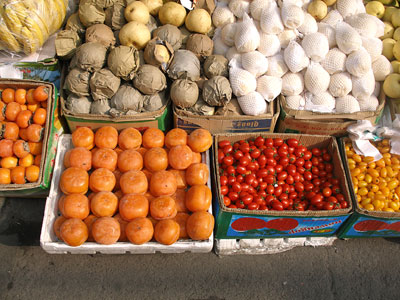Kaiseki ryori is perhaps the most refined and exquisite branch of Japanese cooking. It is the formal Japanese haute cuisine, served in nine courses or more on antique ceramics and lacquer ware. It is designed to appeal to all the senses and uses only seasonal ingredients. Unlike chakaiseki, or tea-ceremony kaiseki, restaurant-style kaiseki cuisine originated in the meals served at poetry gatherings. (This explains why restaurant-style kaiseki is usually written with Chinese characters meaning "banquet.") Today, this type of cooking can be found at first-class Japanese restaurants, where guests can enjoy eating in a relaxed, informal setting. In restaurant-style kaiseki, courses are served on lacquered trays without legs and are enjoyed one at a time. The menu generally consists of a sakizuki (appetiser), a suimono (clear soup), a mukozuke (usually slices of raw fish), a kuchigawari (palette refresher), a yakimono (something grilled), a nimono (something boiled or simmered), an aizakana (something steamed or deep-fried), a sunomono (something vinegared) and a tomewan (final dish). On the simplest level a kaiseki course consists of one soup and three side dishes (rice and pickles are included but are not numbered among the dishes.) Courses increase in complexity in odd increments to include arrangements of five dishes (two of which are soup), seven, nine, eleven, etc. Their contents and the order in which they are served is left up to the chef's discretion.
The young shoots of the daikon radish. These days, however, they are also cultivated separately. Daikon sprouts are used to add a touch of green and a bit of spiciness to salads, hand-rolled sushi and sashimi.

Persimmon. Date plum. Kaki. The national fruit of Japan. A soft, sweet winter fruit similar to a large tomato, originating in China and unknown in Europe until shown in Paris in 1873. It has green skin which ripens to a glossy orange red. It is eaten as a dessert in fruit salads or used in jam (US: jelly).